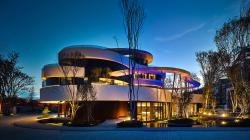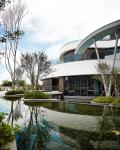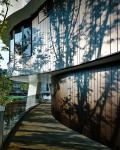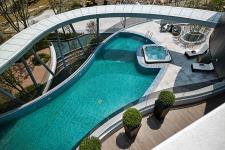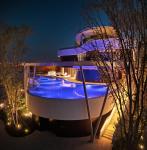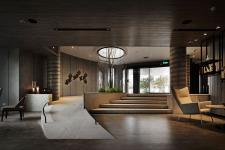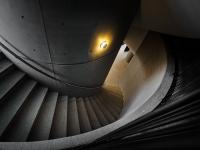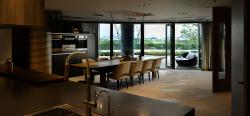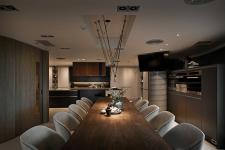The building is located in Tainan, Taiwan, it is a shared space for the residents of the community. It provides spaces for dining, reading, exercising, learning, sharing and communication. The floors are stacked vertically as a series of free curves. The design is based on natural patterns and includes a reflecting pond, outdoor plaza and unobstructed views of the nearby hills. Varied surfaces with differing heights encourage people to walk in and explore the interior. Natural elements are brought into the building not only through its décor, but with a wall formed of tall trees. The result is a harmonious environment where human life maintains contact with nature.
The use of continuous glass windows breaks spatial barriers, inviting nature indoors and creating links between inside and outside. To solve the western-sun-exposure problem common in Taiwan, the solid wall is positioned on the west of the building, reducing the impact of intense sunlight on the interior temperature. On the other hand, the second floor swimming pool faces a stand of trees on the east side, moderating the temperature on cold winter mornings. When the sun brings warmth, the building’s design provides shelter for the pool.
Height differences are used to create a more efficient water cycle. Nano silane ketone resin, used on the outdoor wall, effectively controls mould while providing waterproofing and allowing air circulation. The gaps between the anodized aluminum panels and RC walls help vent air warmed by the sun, increasing the energy efficiency of the indoor cooling system.
Hall as part of the architecture is a ventilation tower. At first, planning trees and pools to lower the temperature of air. Moreover, after absorbing the heat generated by the top iron, thermal buoyancy will promote indoor air convection rate, achieve adequate ventilation.
2014
2015
Eco and recyclable building material is selected to reduce replacement rate and decrease the impact to the environment. It is really an important indicator to use the integrated angles made from recyclable materials, aluminum material, metal and glasses with good resistance to time and weather and so on. The renewable power generated from solar power is an important sustainable goal for the building as well.
Design Company : Chain10 Architecture & Interior Design Institute
Chief Designer : KENG-FU LO
Photographer: Kuo-Min Lee
Green Places Community Clubhouse by Chain10 Architecture & Interior Design Institute in Taiwan won the WA Award Cycle 25. Please find below the WA Award poster for this project.
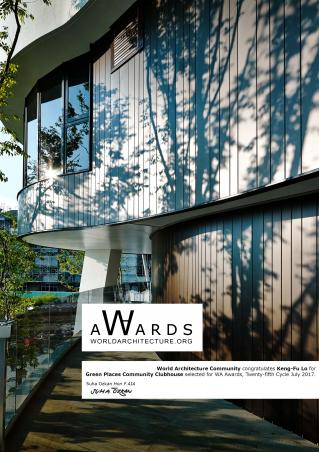
Downloaded 141 times.
Favorited 2 times


